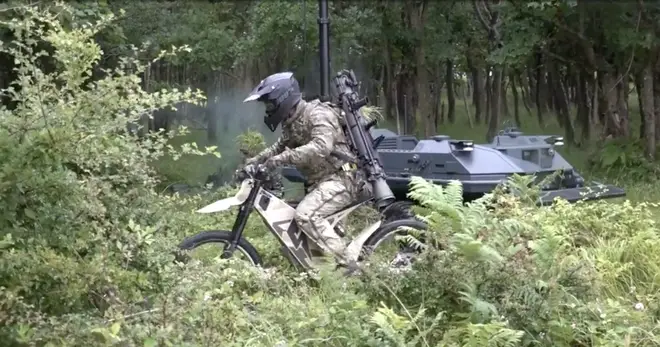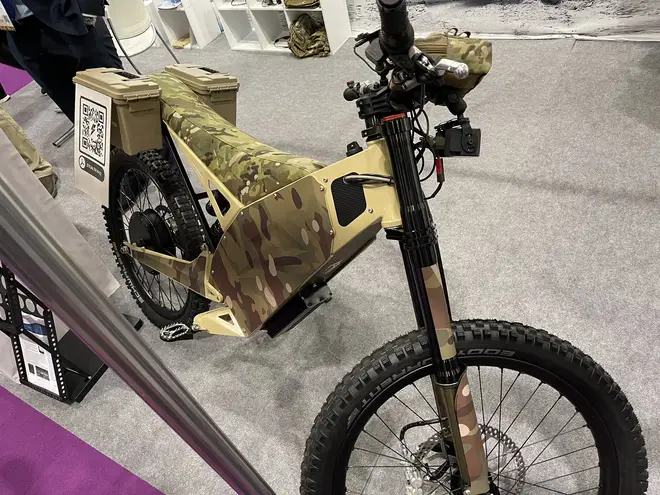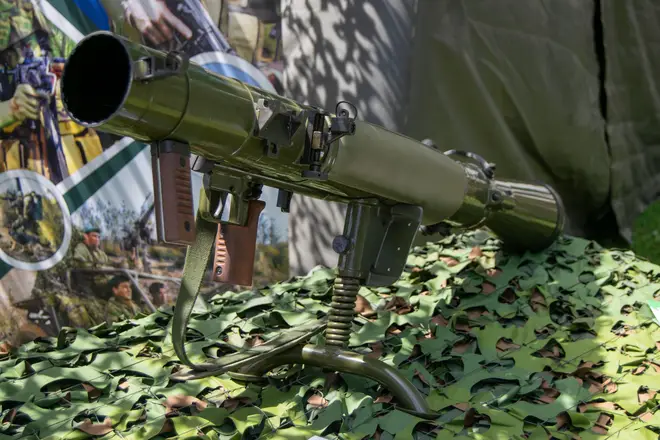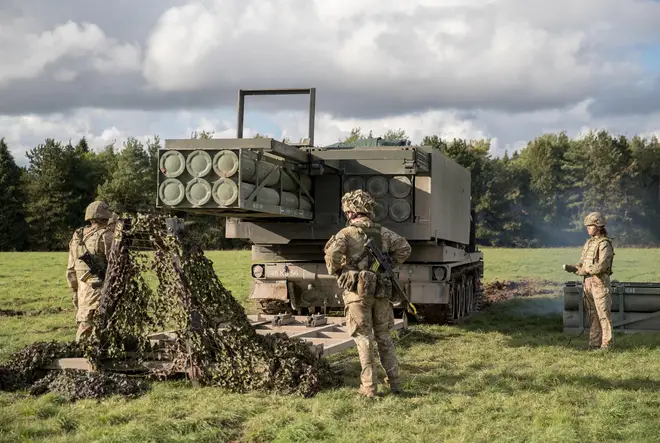
Tom Swarbrick 4pm - 7pm
18 July 2023, 07:15

British troops are trialing the use of e-bikes armed with anti-tank weapons on the battlefield, drawing inspiration from tactics used during the war in Ukraine.
During the early days of the conflict, Ukrainian soldiers effectively targeted Russian tanks using Delfast electric bikes, which boast an impressive range of approximately 200 miles.
In light of this, the British Army has commenced trials with a £6,500 off-road electric bike named the Stealth H-52. This bike allows for a stealthy approach towards the enemy before unleashing the firepower of a Carl-Gustaf shoulder-fired rifle to take down a tank.
The Stealth H-52 was on display at the Defence and Security Exhibition International arms fair in London in 2021 with several exhibitors offering heavy-duty, battery-assisted off-road “combat bikes”, and special forces are the likely customers.
They come complete with handlebar-mounted gun carriers and can be used by commando forces needing a way to get behind enemy lines.
Read more: Met to treat male predators the same as terrorists in £366 million plan to overhaul force

Later today the long-awaited defence command paper will be published.
It will set out how the UK will invest an additional £2.5 billion in stockpiles and a global response force.
A further £400 million will be spent on modernising personnel accommodation.
The report will also outline how investment in science and technology will be prioritised as part of an effort to modernise the armed forces.

Labour has warned that the defence plan was "not a good enough response to war in Europe".
Shadow defence secretary John Healey said Ben Wallace "must explain if he is pledging new money for stockpiles or these are funds already announced.
"The British Army is being cut to its smallest size since Napoleon and there is still no plan to ensure our Nato obligations are fulfilled in full."
Read more: Ben Wallace to quit as Defence Secretary and stand down as MP at next election
Read more: Russia halts deal allowing Ukraine to ship grain in blow to global food security

The military's research centre, Porton Down, has been studying Russian vehicles to gain valuable insights for developing more potent weaponry.
Their recent tests at Lulworth Camp, a British army base in Dorset, involved a variety of cutting-edge technology. One such technology was an unmanned ground vehicle called the Mission Master, which was fitted with a powerful 50-calibre machine gun.

In addition to the Mission Master, troops from the Rangers, 30 Commando, and 2 Yorks tried out Smash sight anti-drone weapons.
These tests have been prompted by the urgency to combat unmanned aerial vehicles, often employed for artillery spotting during warfare. The challenge lies in developing effective equipment to take out reconnaissance drones and disrupt the enemy's surveillance capabilities.

UK Armed Forces demonstration of the future integrated nature of the battlespace
To address this need, Porton Down has been experimenting with laser guns and truck-mounted cannons that fire microwave frequencies. These technologies, part of the Team Hersa project, aim to knock drones out of the air swiftly.
The Ministry of Defence has also adapted Brimstone air-launched missiles, typically deployed from Typhoon fighter jets, to be used with armoured vehicles following Russia's invasion of Ukraine.
This modified missile launcher, known as Wolfram, has already proven its effectiveness in Ukrainian battles and is now being assessed as a more budget-friendly alternative to systems like the GMLRS. The exercises at Lulworth also featured a lineup of military assets, including the F-35 fighter jet, A400M turboprop personnel carrier, Challenger 2 tanks, Ajax armoured vehicles, and AH-64E Apache helicopters.